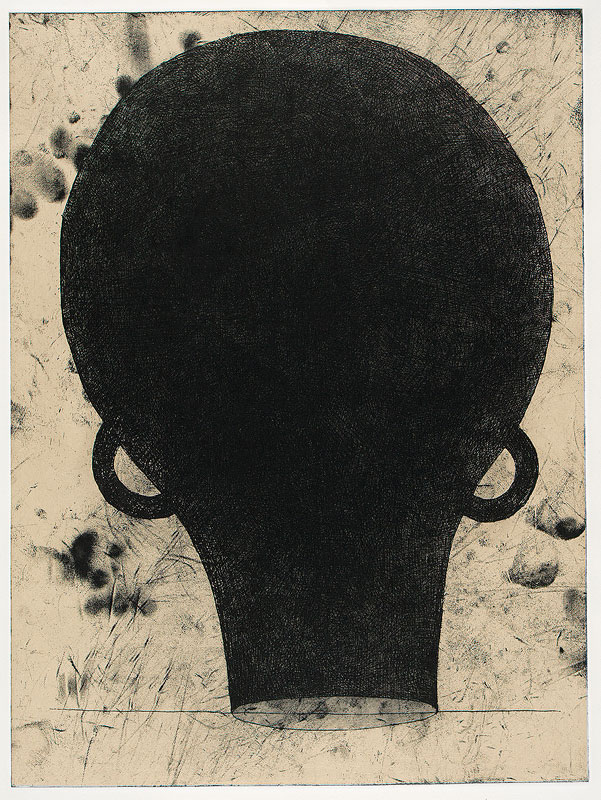A member of the Postminimalist generation, Martin Puryear has distinguished his career with an enduring commitment to traditional yet diverse methods of craft. While the artist is best known for his abstract handmade sculptures, drawing has always been vital to his artistic practice. Martin Puryear: Multiple Dimensions at the Morgan Library and Museum in New York runs through this Sunday, January 10th and offers a remarkable glimpse into Puryear’s creative evolution and working process.

Martin Puryear, Drawing for Untitled, ca. 2009. Compressed charcoal on ivory wove paper. Courtesy of the artist. © Martin Puryear, Courtesy Matthew Marks Gallery.

Martin Puryear, Quadroon, 1966–67. Softground etching and aquatint, in black, with plate tone monotype in brown, on cream wove paper. Courtesy of the artist. © Martin Puryear, Courtesy Matthew Marks Gallery.
Since the late 1960s, Puryear’s drawings have mostly been preliminary studies for three-dimensional works. Spanning two gallery spaces, the exhibition ranges from quick sketches to monumental etchings and comprises about seventy works, many of which are works on paper, including quick sketches, prints, and process drawings for his sculptures. Culled largely from the artist’s personal collection, these never before seen works carry evidence of the artist’s hand, his exploration of materials and angles, and his experimentation with variations on similar forms. In these drawings, one can also observe the artist’s various methods of building, joining, deconstructing, and reconstructing.
Also on display are examples of sculpture that Puryear created as a student in Sweden and later in his career. Handmade from a diverse range of materials, such as bronze, cast iron, and a variety of woods, Puryear’s abstract organic forms are rich in psychological and intellectual references that explore issues of culture and history. For Puryear, “to install” is not merely a gesture of positioning a sculpture but an art practice in and of itself, and the manner in which an artist positions a sculpture plays an active role in creating a relationship with the viewer. As these sculptures are not intended to be viewed from one perspective, the experience of the viewer walking around the piece over time is where the main energy is created with an elegant and romantic effect.

Martin Puryear, Face Down, 2008. White bronze. Courtesy of the artist. © Martin Puryear, Courtesy Matthew Marks Gallery. Photography by Jamie Stukenberg, Professional Graphics.
The exhibition sheds light on Puryear’s didactic use and reuse of motifs. Some of the dominant motifs include the Phrygian cap and the human head, both of which Puryear revisits in series of works in various media. Though Puryear experiments with the conical shape of the cap, depicting it upside down or sideways in his drawings and prints, the cap’s significance extends beyond formal concerns, as is true with many of Puryear’s motifs. In this case, Puryear draws on the cap’s history as a symbol of liberty.

Martin Puryear, Untitled (LA MoCA portfolio), 1999. Hard and soft ground etching and aquatint, on cream Japanese paper, laid down on white wove paper (chine collé). Art Institute of Chicago, restricted gift of Kaye and Howard Haas, 2007.88. © Martin Puryear.
The present show at the Morgan presents the iterative process of an artist whose elemental and abstract work defies easy categorization. Puryear continues to revisit the set of diverse shapes, motifs, and media that he established throughout his career. As he is quoted in the exhibition’s introductory wall text, his development as an artist has only been “linear in the sense that a spiral is linear.”
Exhibition on view at The Morgan Library & Museum through January 10, 2016
225 Madison Avenue at 36th Street
Martin Puryear: Multiple Dimensions travels to the Art Institute Chicago next.
On view February 5-May 3, 2016.
– Jessica Han, Communications Intern at The Drawing Center
